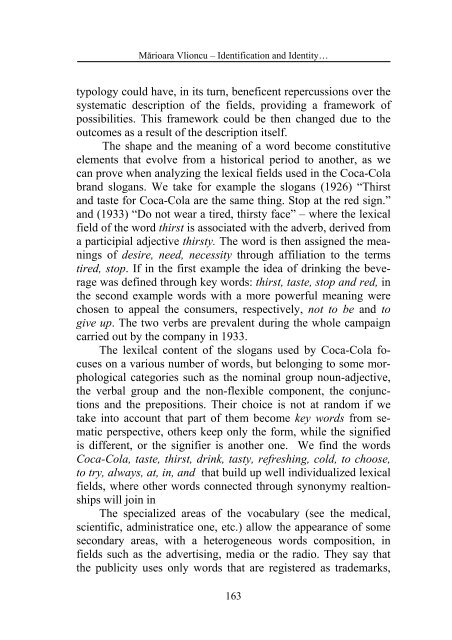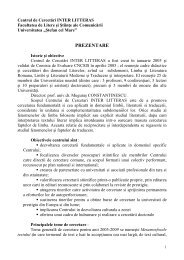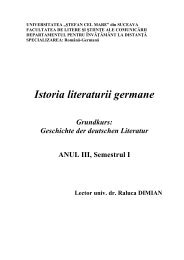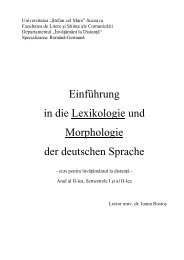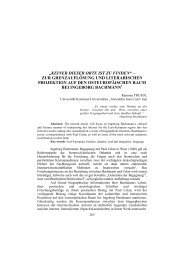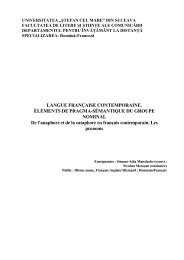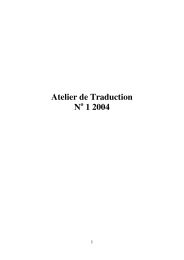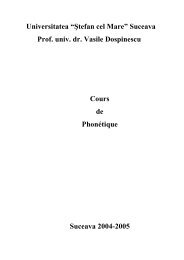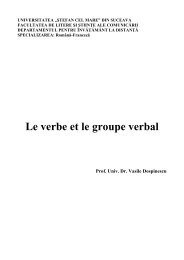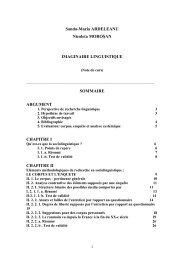Le discours de la francophonie
Le discours de la francophonie
Le discours de la francophonie
You also want an ePaper? Increase the reach of your titles
YUMPU automatically turns print PDFs into web optimized ePapers that Google loves.
Mărioara Vlioncu – I<strong>de</strong>ntification and I<strong>de</strong>ntity…typology could have, in its turn, beneficent repercussions over thesystematic <strong>de</strong>scription of the fields, providing a framework ofpossibilities. This framework could be then changed due to theoutcomes as a result of the <strong>de</strong>scription itself.The shape and the meaning of a word become constitutiveelements that evolve from a historical period to another, as wecan prove when analyzing the lexical fields used in the Coca-Co<strong>la</strong>brand slogans. We take for example the slogans (1926) “Thirstand taste for Coca-Co<strong>la</strong> are the same thing. Stop at the red sign.”and (1933) “Do not wear a tired, thirsty face” – where the lexicalfield of the word thirst is associated with the adverb, <strong>de</strong>rived froma participial adjective thirsty. The word is then assigned the meaningsof <strong>de</strong>sire, need, necessity through affiliation to the termstired, stop. If in the first example the i<strong>de</strong>a of drinking the beveragewas <strong>de</strong>fined through key words: thirst, taste, stop and red, inthe second example words with a more powerful meaning werechosen to appeal the consumers, respectively, not to be and togive up. The two verbs are prevalent during the whole campaigncarried out by the company in 1933.The lexilcal content of the slogans used by Coca-Co<strong>la</strong> focuseson a various number of words, but belonging to some morphologicalcategories such as the nominal group noun-adjective,the verbal group and the non-flexible component, the conjunctionsand the prepositions. Their choice is not at random if wetake into account that part of them become key words from sematicperspective, others keep only the form, while the signifiedis different, or the signifier is another one. We find the wordsCoca-Co<strong>la</strong>, taste, thirst, drink, tasty, refreshing, cold, to choose,to try, always, at, in, and that build up well individualized lexicalfields, where other words connected through synonymy realtionshipswill join inThe specialized areas of the vocabu<strong>la</strong>ry (see the medical,scientific, administratice one, etc.) allow the appearance of somesecondary areas, with a heterogeneous words composition, infields such as the advertising, media or the radio. They say thatthe publicity uses only words that are registered as tra<strong>de</strong>marks,163


